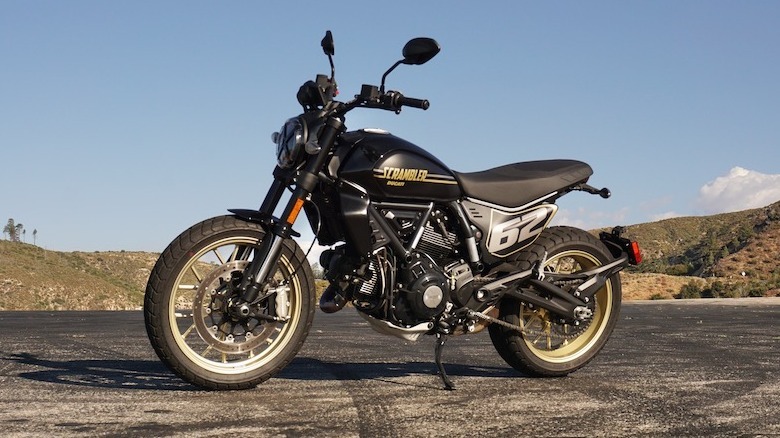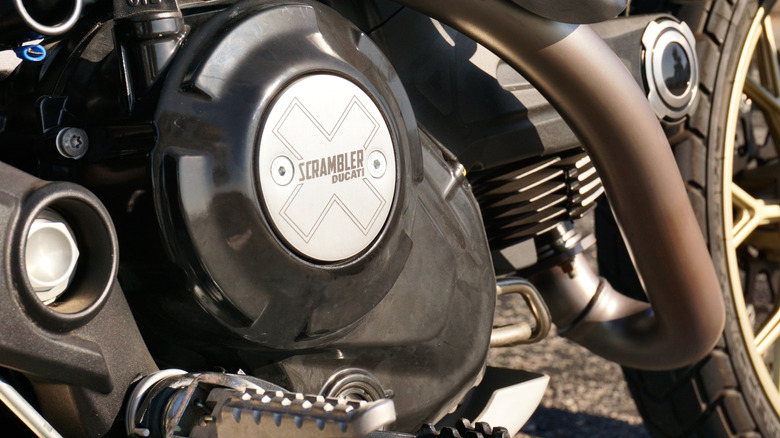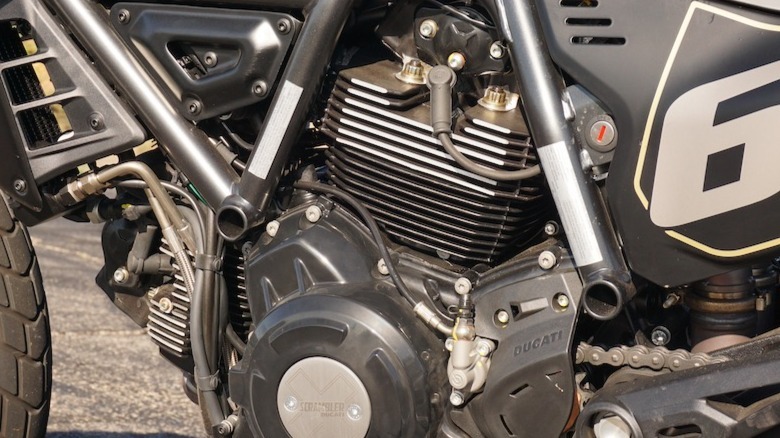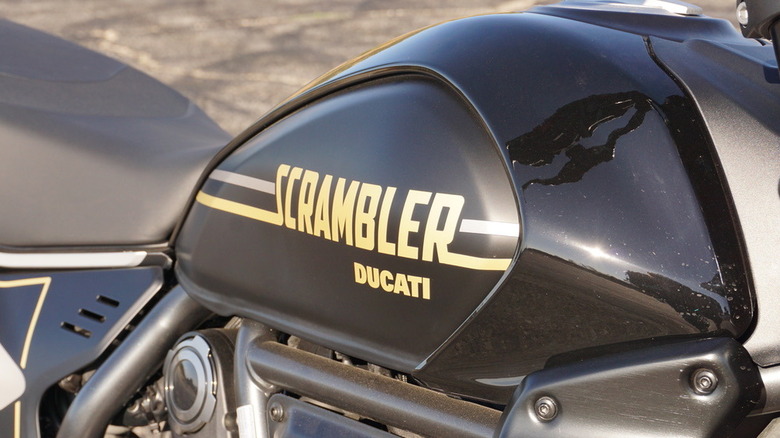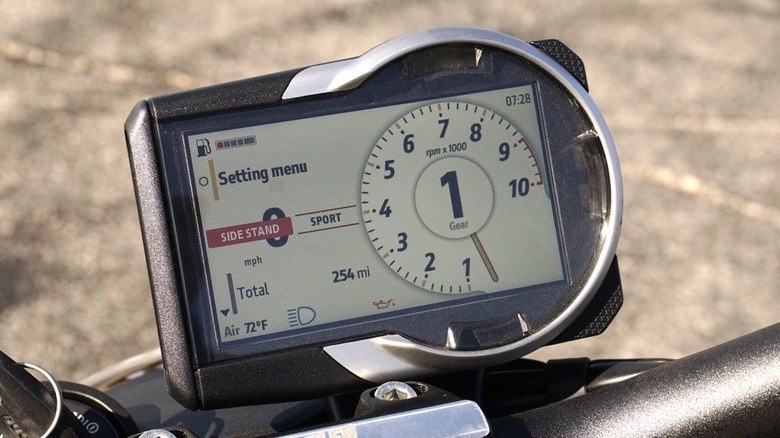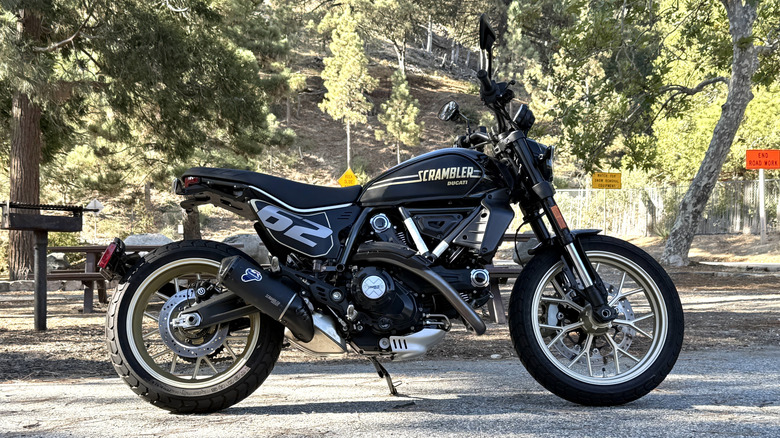It's Ducati's Cheapest Motorcycle, But The 2025 Scrambler Isn't Just For Beginners
With so many high-horsepower motorcycles available these days, it's easy to get caught up in spec-sheet racing. Before we even swing our leg over the seat, we want to know how much power a motorcycle has, how fast it is, and how it'll hold up in a head-to-head battle against other bikes on some theoretical top-speed runway that we magically have at our disposal. I'm certainly guilty of judging a bike by its numbers ahead of the riding experience, no matter how much I try to avoid it. But motorcycles like the Ducati Scrambler won't be bullied into a war of wheelies or intimidated into a battle of brute force. It takes a more authentic approach.
A lot of motorcycle manufacturers are happy to offer you a modern café bike or throw some classic sheet metal on top of a modern engine and frame, but the 2025 Ducati Scrambler does more than that. It is moderately powered, reasonably priced, and designed with the sort of style that will turn heads just about everywhere you go. It's not the fastest bike in its segment, nor is it the most technologically advanced, but that doesn't keep it from being desirable and fun to ride.
Power is adequate, but warm-blooded
The Scrambler is powered by an air-cooled 803cc L-Twin engine that produces 73 horsepower and 48.1 lb-ft of torque that sends power to the ground via a traditional six-speed manual. The Full Throttle trim that I tested has a claimed "wet weight" with no fuel of 388 lbs so it crests 400 lbs with a full tank.
On lower trims, a quick shifter is optional, but it comes standard on the Full Throttle trim and I was glad to have it. The six-speed transmission moved up and down through the gears with quick, snappy-but-small jolts and, when required, the clutch lever was relatively light. Both the clutch lever and the front brake lever were a bit further away from the handlebar grips then I would've liked, but I adjusted them to their closest settings and made do.
Unfortunately, the 803cc engine does get pretty hot, even when the Scrambler is under way. The heat radiates, collecting around the knees and lower legs, so splaying my knees out to let a bit of breeze flow through was a regular occurrence on the highway. That's just part of the territory with the air-cooled engine. It makes warm summer rides a bit less uncomfortable, especially in slow-speed traffic, but most of the heat is distributed near the front of the bike and not through the seat.
Looking for corner apexes on knobby tires
Gaining confidence on the Scrambler's knobby tires is tough. It takes more pressure to lean the bike over than it would on most sport bikes of the same size, but once you're mid-lean the bike feels relatively stable. To put this gripe of mine in context, it's worth noting that just a few days before riding the Scrambler, I'd been riding Ducati's sporty-but-laid-back XDiavel–which came with Diablo Rosso III tires–which was a thoroughly sporting bike despite its size and laid-back rider triangle. A change in tire choice could significantly update the Scrambler's handling dynamics and make it a real canyon hooligan and that's probably the first modification I'd make.
Braking is another confidence-reducing area, especially if you want to stop repeatedly and with urgency. The single front brake doesn't give nearly as much bite as I'd like. I found myself applying more and more pressure on the front until I reached threshold-braking levels, relying on the rear brake to balance things out. It's not in my normal testing procedures to lock up a bike's rear tire, but I did that at least once or twice as I approached corners on the Scrambler. If I were brave enough to take it riding in the dirt, it might even be the kind of dynamic I was looking for, but that wasn't in the cards for my week-long test of the bike.
Compliant enough for the city life
The Scrambler doesn't have a particularly sophisticated suspension. It's missing many of the adjustability settings that other modern motorcycles offer, but it still provides a pleasant ride even without complication. Big bumps are mostly absorbed and whether through a combination of chunky tires or decent suspension travel, most of the little rocks and ruts I rode over disappeared. The seat is comfortable too; after a day of riding there was no soreness in my backside. The riding position is upright, with the handlebars sweeping far enough back to be easily within reach for me at 5-foot-9. The controls were easy to use and the handlebars weren't crowded with buttons. It's simple, like motorcycles used to be. Now get off my lawn.
A small drawback for the sporty crowd: the seat being relatively flat means Ducati has to make it out of somewhat slide-resistant materials. At least that's what I'm guessing happens during the build process. Otherwise, you'd go careening off to one side or the other pretty easily thanks to the lack of meaningful curves over the top of the bike. But the grippy seat surface means you can't rotate off the seat very easily though, so if you're used to moving around the tank on a sport bike like I am, it'll take a little bit of adjustment to ride the Scrambler at speed.
Setting a baseline for pricing
There's a certain amount of appeal to buying Ducati's least-expensive bike. It's a big part of what makes the Scrambler, especially in its base trims, the best beginner bike from the Italian brand. The Icon Dark is the base trim level with a starting price of $10,990 (including $995 destination fee). It includes the 4.3-inch rider display, 2 riding modes, and phone connectivity. Adjustable traction control and LED lights are also part of the package. The Icon is a step up from there, with brighter colors (the Icon Dark is all black), a unique tail panel, a USB port under the seat, and a price of $12,190. Then comes the Nightshift and the Full Throttle model, both of which have an MSRP of $13,390.
At the top of the trim-level ladder it's mostly styling differences. The Nightshift is styled a bit more like a classic café bike, while the Full Throttle model I tested is made to look a bit more like a flat-tracker. Things like bar-end mirrors help the Nightshift model differentiate itself, but the Full Throttle gets numbered livery, gold wheels, a sump guard, Ducati's quick shifter (it's an optional accessory on other trims), and the Termignoni muffler. The base model is certainly appealing with its stripped-down/blank-canvas vibes, but for $2,400 extra, the Full Throttle comes with significantly more equipment.
Features and options aplenty but limited fuel
The Scrambler may be a simple bike when it comes to standard equipment, but there's a laundry list of extras you can install before it ever leaves the dealership. Accessories like a full exhaust, side bags, heated grips, raised or lowered seats, navigation, and even a small bug-screen are all available from Ducati. The price goes up accordingly, but there's a lot to like about a bike that's so customizable.
Unfortunately, there's no extra capacity available for additional gas. That's not an option I've seen available on any from-factory bikes these days, but if Ducati offered one, I'd certainly take them up on it. At just 3.83 gallons the fuel tank is relatively small, even for a tracker-style bike, so you won't be going far without filling up. Riding the Scrambler up and down my local mountain range, far from gas, I was worried about range more than once. The gauge would quickly go from full to two-thirds full indicated on the rider screen and it was distracting to be worried about fuel levels that early in the ride. If the solution were a slightly wider, or even taller tank, it wouldn't get in the way of the aesthetic or riding position.
2025 Ducati Scrambler verdict
The Ducati Scrambler has all the classic styling cues you expect to honor its name, in pretty much every trim. It truly looks the part no matter what equipment level you go with. The low handlebars, the single-circular headlight with the "X" through it to call back to the early racing days, and the number 62 displayed on the side of the Full Throttle version to pay homage to the debut year of the first Scrambler – they all fit the aesthetic without feeling contrived. The Termignoni exhaust looks and sounds the part of a proper old-school, thumpy L-twin engine and the rider display, while modern, doesn't draw enough attention to itself to distract from the experience.
If you're looking for the most dynamic experience you can have on two wheels for around 10 grand, the Scrambler isn't it. If you want a classically-styled speed demon, there are plenty of those available from brands like BMW, Triumph, and even Suzuki. Thankfully, that's not what Ducati is going for. The Scrambler is stylish, easy to ride, comfortable, and available with some pretty modern features to go along with its nostalgic looks.

